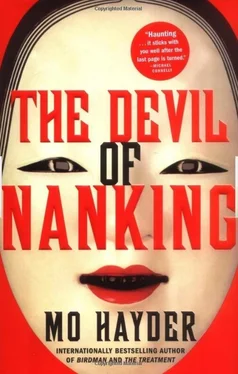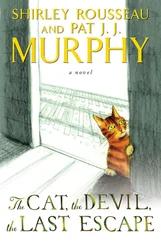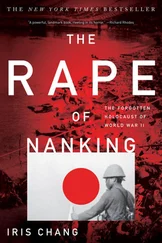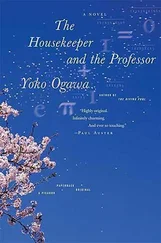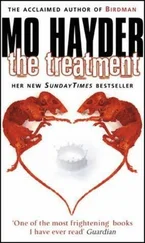‘ We have searched high and low, with the greatest of intention of helping you, our only child, but I am sorry to say, in this instance you are mistaken. We have written to your Responsible Medical Officer to tell him so.’
I remember dropping the letter on to the floor of the ward, a horrible idea occurring to me. What if, I thought, they were right? What if the book didn’t exist? What if I really had made it all up in my head? That, I thought, a low thumping ache starting in my stomach, would be the worst thing that could ever happen.
Sometimes you have to go a long way to prove things. Even if it turns out that you’re only proving things to yourself.
When I was at last discharged from hospital, I knew exactly what I had to do next. In hospital I got all my exams through the teaching unit (I got As for most of them, and that surprised everyone – they all acted as if they thought ignorance equalled stupidity) and out in the real world there were charities for people like me, to help us apply to college. They took me through all the stuff I found difficult – phone calls and bus journeys. I’d studied Chinese and Japanese on my own, from library books, and pretty soon I got a place doing Asian Studies at London University. Suddenly, on the outside at least, I appeared almost normal: I had a rented room, a part-time job handing out leaflets, a student rail pass and a tutor who collected Yoruba sculptures and Pre-Raphaelite postcards. (‘I’ve got a fetish for pale women,’ he’d once said, eyeing me thoughtfully. Then he’d added, under his breath, ‘As long as they’re not crazy, of course.’) But while the other students were picturing a graduation, maybe postgraduate study, I was thinking about Nanking. If there was ever going to be peace in my life I had to know if I’d remembered the details in the orange book properly.
I spent hours in the library, sifting through books and journals, trying to find another copy of the book or, failing that, another publication of the same witness testimony. There had been a book called The Horror of Nanking published in 1980, but it was out of print. No library, not even the Library of Congress, held a copy and, anyway, I wasn’t even sure if it was the same book. But that didn’t matter, because I had found something else. To my amazement I discovered that there was film footage of the massacre.
In total there were two films. The first was Reverend Magee’s. Magee had been a missionary in China in the 1930s and his film had been smuggled out by a colleague, who was so terrified by what he’d seen that he’d sewn it into the lining of his camel-hair coat on his way to Shanghai. From there the film lay forgotten in a hot southern California basement for several years, disintegrating, becoming sticky and distorted, until it was rediscovered and given to the Library of Congress film collection. I’d seen the video copy at London University library. I’d watched it over and over again, peered at it, studied every frame. It showed the horror of Nanking – it showed things I don’t like to think about even in the light of day – but it didn’t show the torture I’d read about all those years ago.
The second, or rather the mention of it, was Shi Chongming’s. The instant I heard about it I forgot everything else.
It was my second year at university. One spring morning, when Russell Square was full of tourists and daffodils, I was in the library, seated at a low-lit table behind the Humanities abstracts stacks, cramped over an obscure journal. My heart was thumping – at last I’d found a reference to the torture. It was an oblique reference, vague, really, and without the crucial detail, but one sentence sent me bolt upright in my chair: ‘Certainly in Jiangsu in the late 1950s, there was mention of the existence of a 16mm film of this torture. Unlike Magee’s film, this film has not, to date, surfaced outside China.’
I grabbed the journal and pulled the Anglepoise low over the page, not quite believing what I was seeing. It was incredible to think there was a visual record of it – imagine that! They could say I was insane, they could say I was ignorant, but no one could say that I’d made it all up – not if it was there in black and white.
‘The film was said to have belonged to one Shi Chongming, a young research assistant from Jiangsu University who had been in Nanking at the time of the great 1937 massacre…’
I reread the paragraph over and over again. A feeling was coming over me that I’d never had before, a feeling that had been packed tight and solid by years of disbelieving hospital staff. It was only when the student at the neighbouring desk sighed impatiently, that I realized I was on my feet, clenching and unclenching my hands and muttering to myself. The hair on my arms was standing on end. It has not yet surfaced outside China…
I should have stolen that journal. If I had really learned my lesson in hospital, I’d have put the journal inside my cardigan and walked straight out of the library with it. Then I’d have had something to show Shi Chongming, proof that I hadn’t made things up from a diseased imagination. He couldn’t have denied it then, and set me questioning my sanity all over again.
Opposite the huge red-lacquered Akamon gate at the entrance to Todai University there was a small place called the Bambi café. When Shi Chongming asked me to leave his office I did, obediently gathering up all my notes and stuffing them back into the holdall. But I hadn’t given up. Not yet. I went to the café and chose a seat in the window, overlooking the gate so that I could see everyone coming and going.
Above me, as far as the eye could see, the skyscrapers of Tokyo rose glittering into the sky, reflecting the sun back from a million windows. I sat hunched forward, staring up at this incredible sight. I knew a lot about this phoenix city, about how Tokyo had risen from the ashes of war, but here, in the flesh, it didn’t seem quite real to me. Where, I thought, is all of wartime Tokyo? Where is the city that those soldiers came from? Is it all buried under this? It was so different from the dark images I’d had all these years, of an old charcoal-stained relic, bombed streets and rickshaws – I decided I would think of the steel and roaring ferro-concrete as an incarnation of Tokyo, something superimposed over the authentic city, the real beating heart of Japan.
The waitress was staring at me. I picked up the menu and pretended to be studying it, my face colouring. I didn’t have any money, because I really hadn’t thought this far. For my plane ticket I’d worked packing frozen peas in a factory, wearing away the skin on my fingers. When I told the university that I wanted to come out here and find Shi Chongming they said it was the last straw. That I could stay in London and finish my failed courses, or leave the university entirely. Apparently I was ‘destructively preoccupied with certain events in Nanking’: they pointed to the unfinished modules, the law department core courses I hadn’t even turned up for, the times I’d been caught in the lecture hall doing sketches of Nanking instead of making notes on the economic dynamics of the Asia-Pacific region. There was no point in asking them for research funds to travel, so I sold my belongings, some CDs, a coffee-table, the old black bike that had got me around London for years. After the plane ticket there wasn’t much left – just a grubby fistful of yen shoved into one of the side pockets of my holdall.
I kept glancing up at the waitress, wondering how long it would be before I’d have to order something. She was starting to look upset, so I chose the cheapest thing on the menu – a melon ‘Danish’ covered in damp sugar grains. Five hundred yen. When the food arrived I counted out the money carefully and placed it on the little saucer the way I could see all the other customers doing.
Читать дальше
